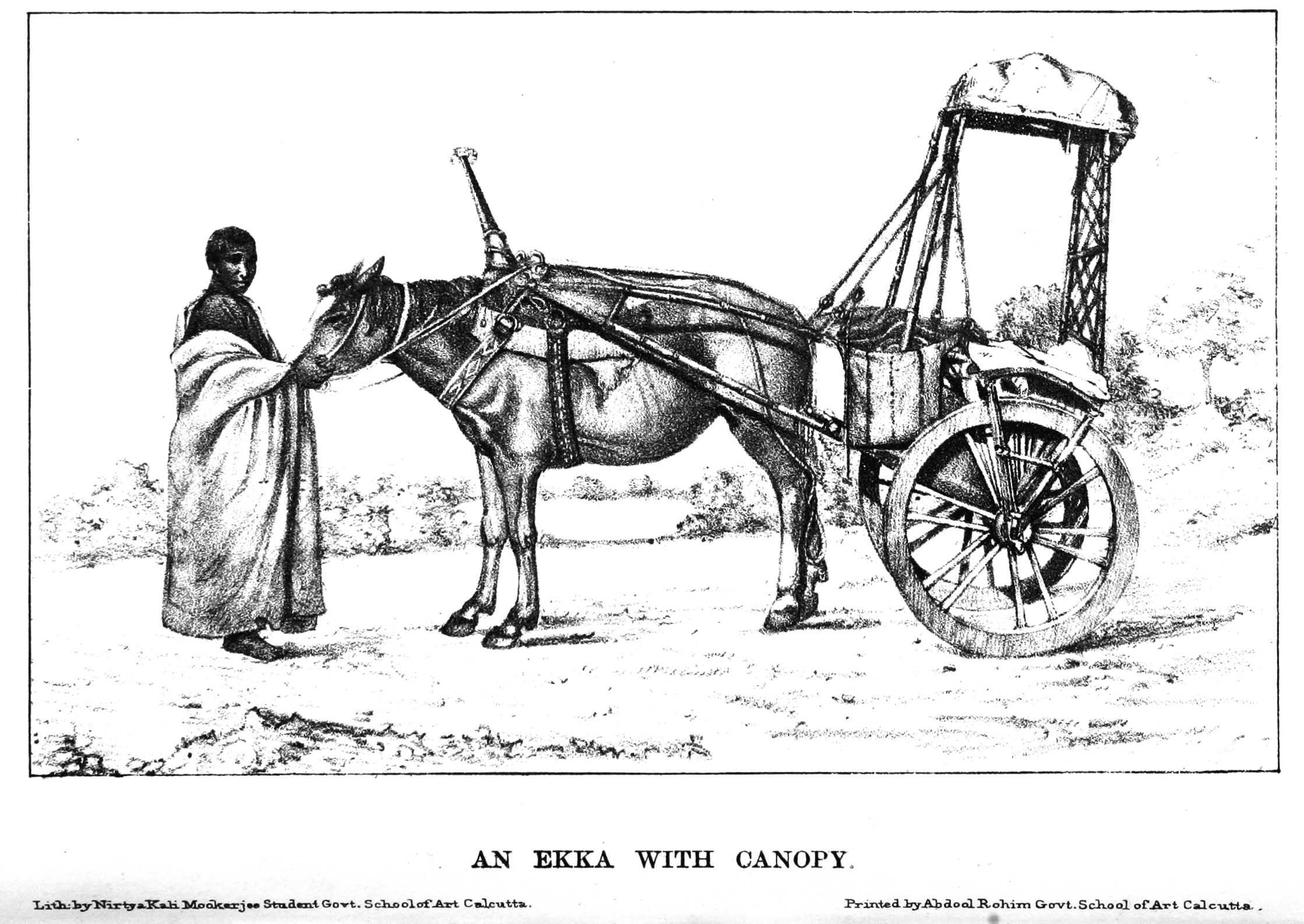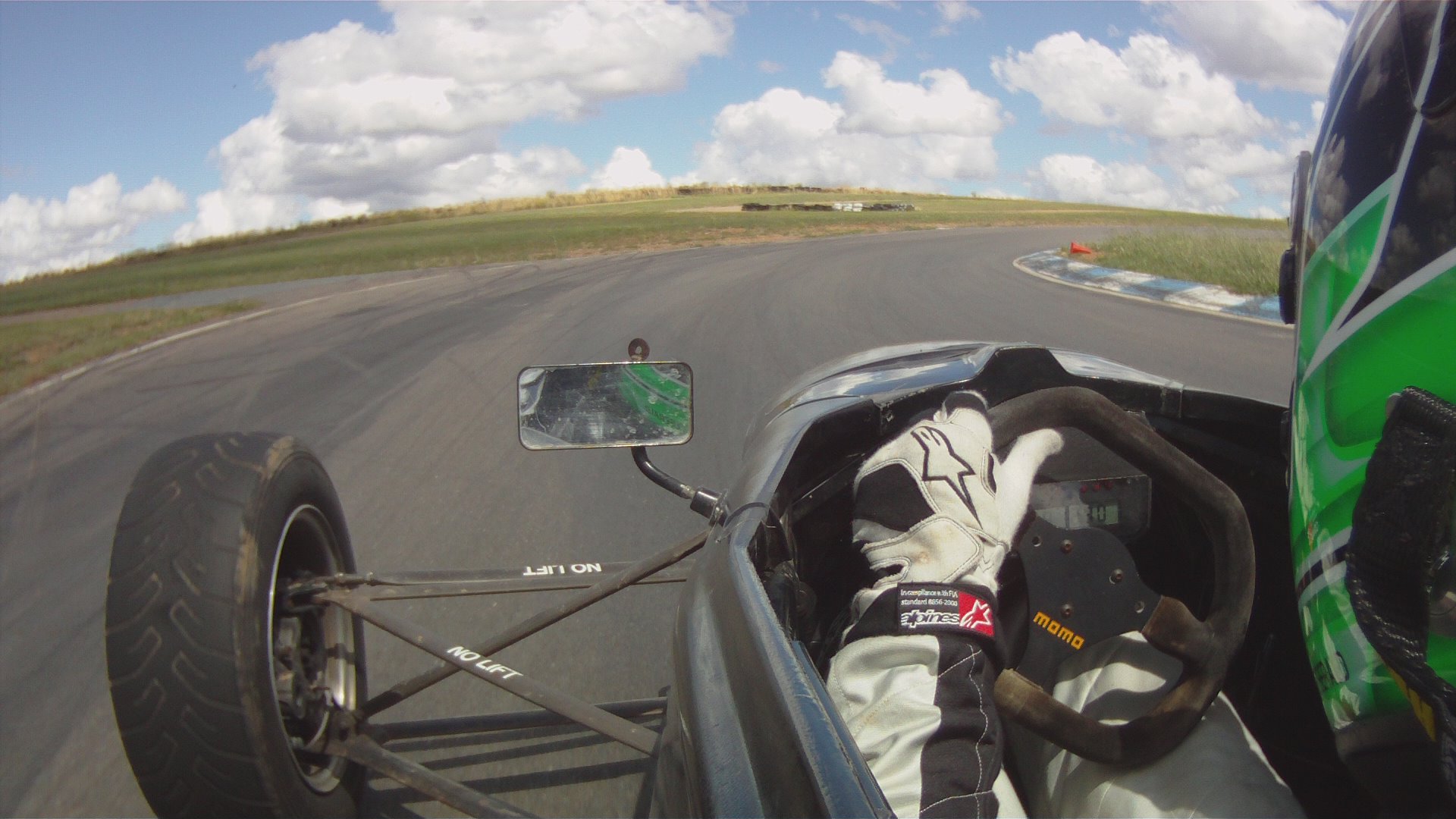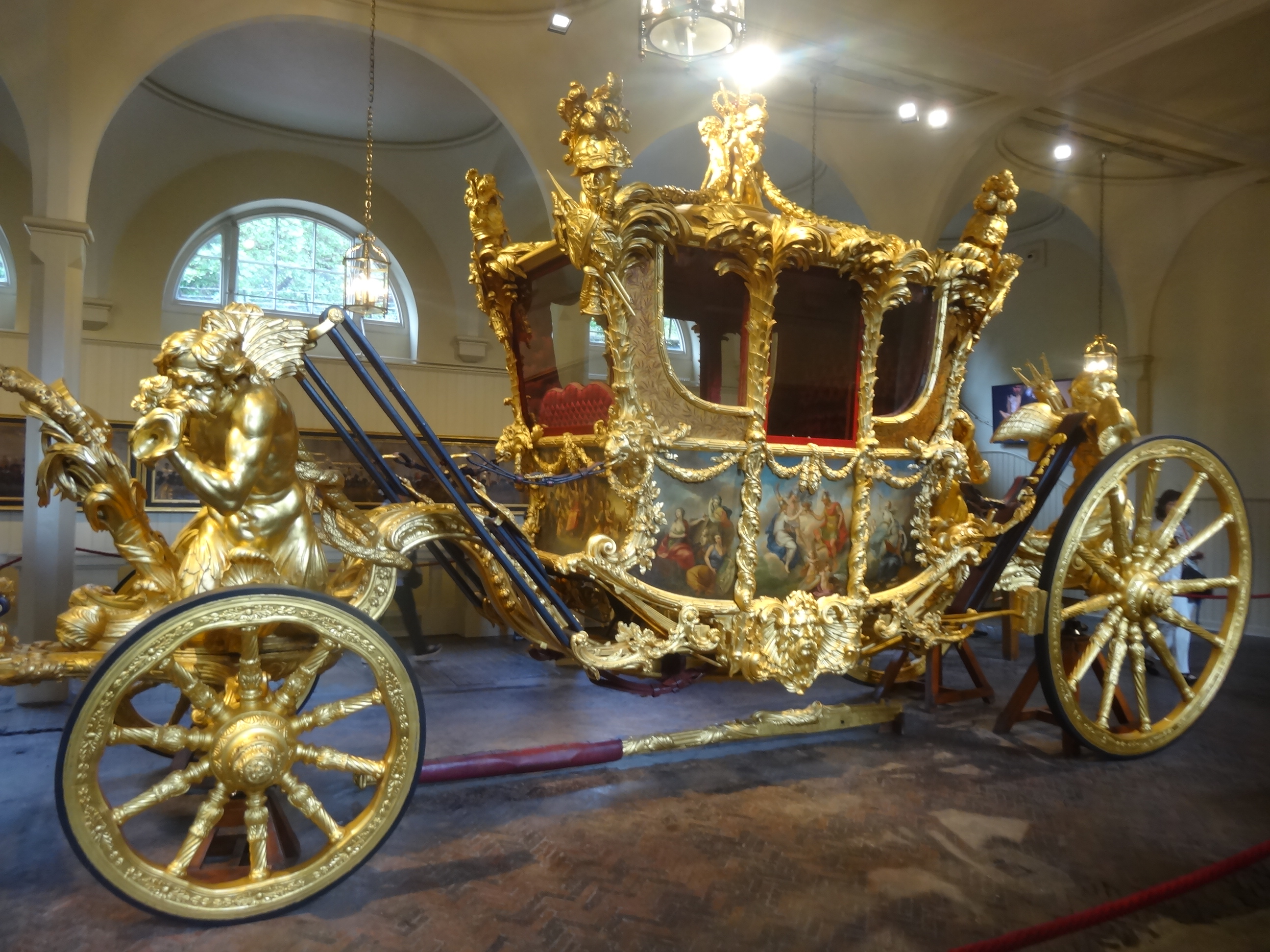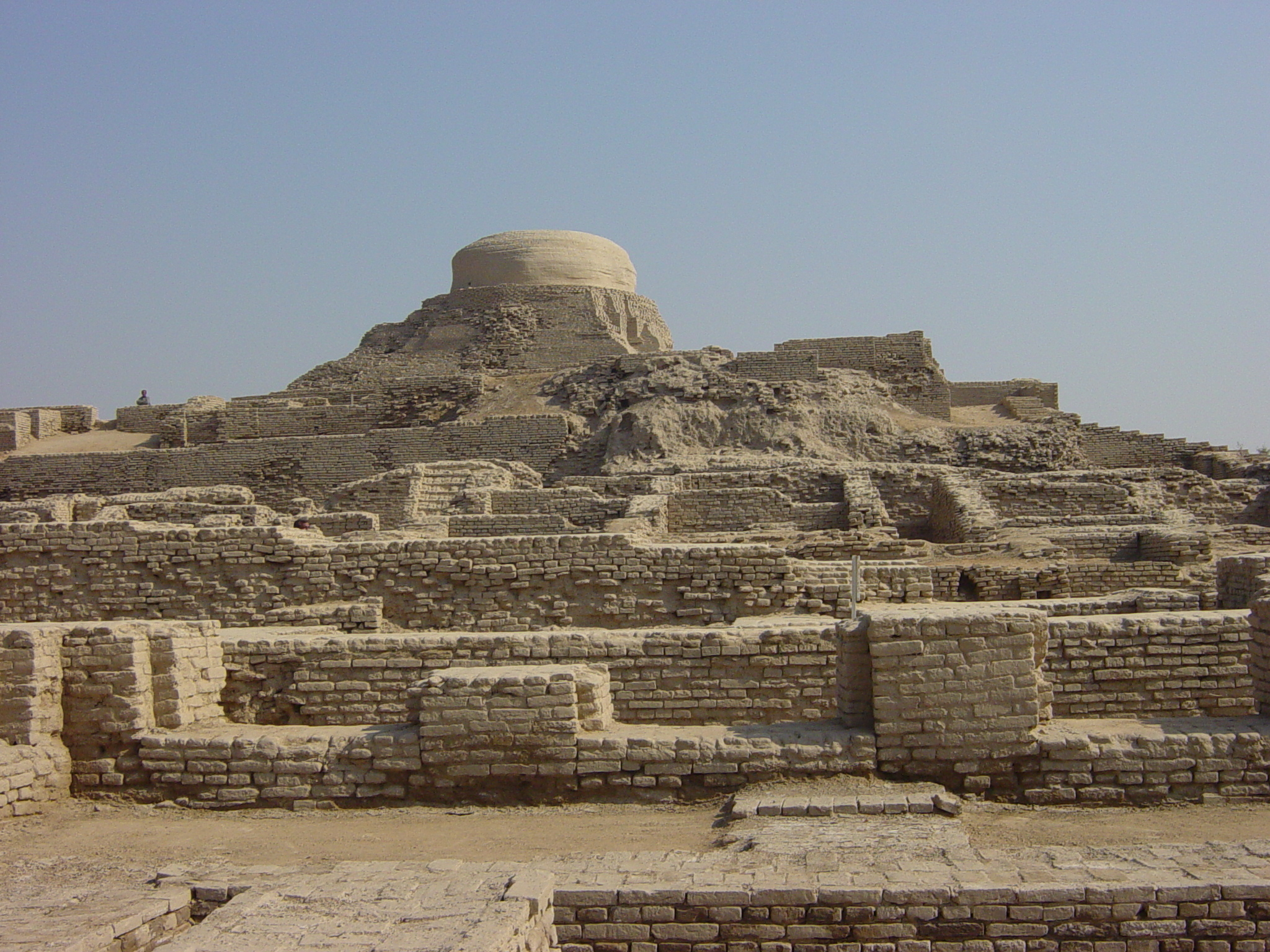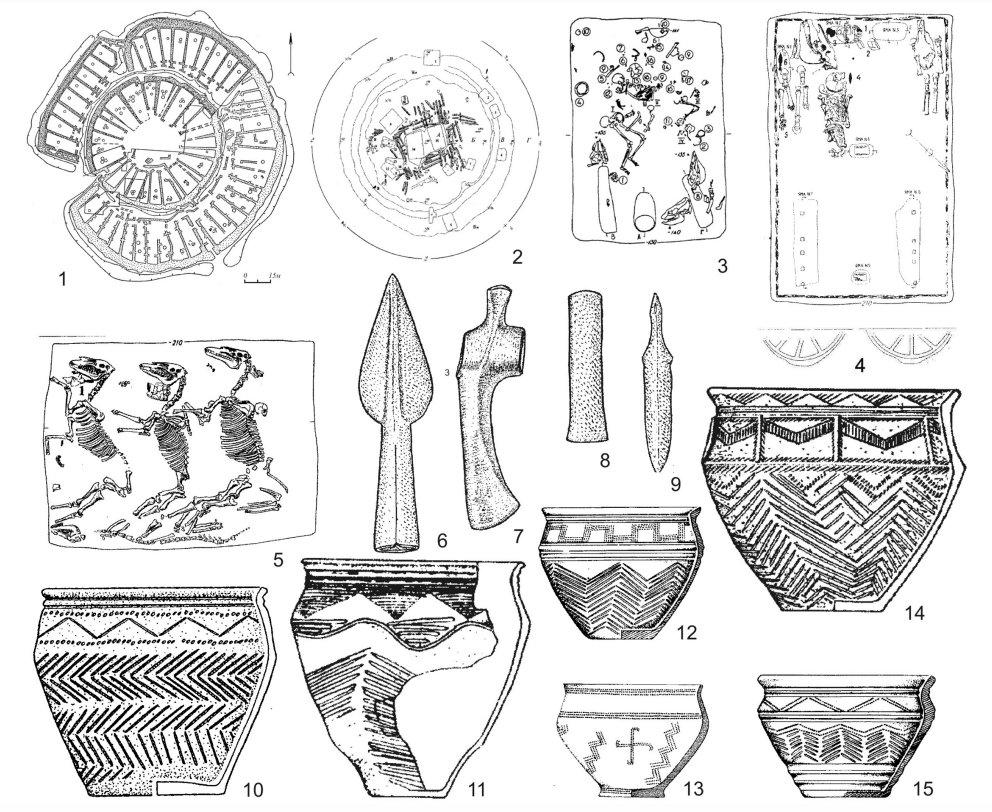|
Carriages
A carriage is a two- or four-wheeled horse-drawn vehicle for passengers. In Europe they were a common mode of transport for the wealthy during the Roman Empire, and then again from around 1600 until they were replaced by the motor car around 1900. They were generally owned by the rich, but second-hand private carriages became common public transport, the equivalent of modern cars used as taxis. Carriage suspensions are by leather strapping or, on those made in recent centuries, steel springs. There are numerous names for different types. Two-wheeled carriages are usually owner-driven. Coaches are a special category within carriages. They are carriages with four corner posts and a fixed roof. Two-wheeled war chariots and transport vehicles such as four-wheeled wagons and two-wheeled carts were forerunners of carriages. In the 21st century, horse-drawn carriages are occasionally used for public parades by royalty and for traditional formal ceremonies. Simplified modern versio ... [...More Info...] [...Related Items...] OR: [Wikipedia] [Google] [Baidu] |
Ekka (carriage)
An ekka (sometimes spelt hecca, ecka or ekkha) is a one-horse carriage used in northern India. ''Ekkas'' (the word is derived from Hindi ''ek'' for "one") were something like 'trap (carriage), traps' (of 'a pony and trap'), and were commonly used as Cabriolet (carriage), cabs, or private hire vehicles in 19th-century India. They find frequent mention in colonial literature of the period (for example, Kipling's "The Three Musketeers (short story), The Three Musketeers"). It is also said that some kind of ekkas were used by people of Indus Valley civilisation (without the spoked wheel). Ekkas were typically drawn by a single horse, pony, mule (or sometimes bullock) and had a pair of large wooden wheels (and traditionally, a wooden axle) and the carriage had a flat floor with a canopy providing shade to the passengers and the driver. Traditionally, they lacked springs and seats, with the passengers having to sit on their haunches and withstand the jolts transmitted by the wheels. J ... [...More Info...] [...Related Items...] OR: [Wikipedia] [Google] [Baidu] |
Horse-drawn Vehicle
A horse-drawn vehicle is a piece of equipment pulled by one or more horses. These vehicles typically have two or four wheels and were used to carry passengers or a load. They were once common worldwide, but they have mostly been replaced by automobiles and other forms of self-propelled transport but are still in use today. General Horses were domesticated circa 2000 BCE. Before that oxen were used. Historically, a wide variety of arrangements of horses and vehicles have been used, from chariot racing, which involved a small vehicle and four horses abreast, to horsecars or trollies, which used two horses to pull a car that was used in cities before electric trams were developed. A two-wheeled horse-drawn vehicle is a cart (see various types below, both for carrying people and for goods). Four-wheeled vehicles have many names – one for heavy loads is most commonly called a wagon. Very light carts and wagons can also be pulled by Donkey, donkeys (much smaller than horses), pony ... [...More Info...] [...Related Items...] OR: [Wikipedia] [Google] [Baidu] |
Suspension (vehicle)
Suspension is the system of tires, tire air, spring (device), springs, shock absorbers and Linkage (mechanical), linkages that connects a vehicle to its wheels and allows relative motion between the two. Suspension systems must support both road holding/Automobile handling, handling and ride quality, which are at odds with each other. The tuning of suspensions involves finding the right compromise. The suspension is crucial for maintaining consistent contact between the road wheel and the road surface, as all forces exerted on the vehicle by the road or ground are transmitted through the tires' contact patches. The suspension also protects the vehicle itself and any cargo or luggage from damage and wear. The design of front and rear suspension of a car may be different. History An early form of suspension on ox-drawn carts had the platform swing on iron chains attached to the wheeled frame of the carriage. This system remained the basis for most suspension systems unti ... [...More Info...] [...Related Items...] OR: [Wikipedia] [Google] [Baidu] |
Coach (carriage)
Coaches are horse-drawn carriages which are large, enclosed, four-wheeled, pulled by two or more horses, and controlled by a coachman or postilion (riders). If driven by a coachman, there is a raised seat in front for a coachman called a ''box'', ''box seat'', or ''coach box''. A coach body typically has a door on each side, a forward facing seat, and frequently another seat facing it. Coaches were built for specific purposes which included Mail coach, transporting mail or Stage station, travelers, privately owned coaches, and State coach, elaborate coaches for state occasions. Types Coaches were constructed for specific purposes. Below is a list of general types of coaches and their purposes. *Private coach: Privately owned, usually by a noble family or high-ranking official. *Public coach: Used in public service to carry mail, passengers, and parcels. *Mail coach or post coach: A public coach contracted to carry mail along established routes, but also carried premium-fare ... [...More Info...] [...Related Items...] OR: [Wikipedia] [Google] [Baidu] |
Wagon
A wagon (or waggon) is a heavy four-wheeled vehicle pulled by Working animal#Draft animals, draft animals or on occasion by humans, used for transporting goods, commodities, agricultural materials, supplies and sometimes people. Wagons are immediately distinguished from carts (which have two wheels) and from lighter four-wheeled vehicles primarily for carrying people, such as carriages. Common animals which pull wagons are horses, mules, and oxen. One animal or several, often in pairs or teams may pull wagons. However, there are examples of human-propelled wagons, such as Corf (mining), mining corfs. A wagon was formerly called a wain and one who builds or repairs wagons is a Wainwright (occupation), wainwright. More specifically, a wain is a type of horse- or oxen-drawn, load-carrying vehicle, used for agricultural purposes rather than transporting people. A wagon or cart, usually four-wheeled; for example, a haywain, normally has four wheels, but the term has now acquired s ... [...More Info...] [...Related Items...] OR: [Wikipedia] [Google] [Baidu] |
Cart
A cart or dray (Australia and New Zealand) is a vehicle designed for transport, using two wheels and normally pulled by draught animals such as horses, donkeys, mules and oxen, or even smaller animals such as goats or large dogs. A handcart is pulled or pushed by one or more people. Over time, the word "cart" has expanded to mean nearly any small conveyance, including shopping carts, golf carts, go-karts, and Side by Side (UTV), UTVs, without regard to number of wheels, load carried, or means of propulsion. History The history of the cart is closely tied to the Wheel#History, history of the wheel. Carts have been mentioned in literature as far back as the second millennium B.C. The first people to use the cart may have been Mesopotamians. Handcarts pushed by humans have been used around the world. Carts were often used for judicial punishments, both to transport the condemned – a public humiliation in itself (in Ancient Rome defeated leaders were often carried in the vic ... [...More Info...] [...Related Items...] OR: [Wikipedia] [Google] [Baidu] |
Reconstruction Of A Roman Traveling Carriage Richly Decorated With Bronze Fittings, Romisch-Germanisches Museum, Cologne (8115675659)
Reconstruction may refer to: Politics, history, and sociology *Reconstruction (law), the transfer of a company's (or several companies') business to a new company *''Perestroika'' (Russian for "reconstruction"), a late 20th century Soviet Union political movement * Critical reconstruction, an architectural theory related to the reconstruction of Berlin after the end of the Berlin Wall *Economic reconstruction *Ministry of Reconstruction, a UK government department * *The Reconstruction era of the United States, the period after the American Civil War, 1865–1877 ** The Reconstruction Acts, or Military Reconstruction Acts, addressing requirements for Southern States to be readmitted to the Union *Reconstruction Finance Corporation, a United States government agency from 1932 to 1957 Arts, entertainment, and media Films * ''Reconstruction'' (1968 film), a Romanian tragicomedy * ''Reconstruction'' (2001 film), about the 1959 Ioanid Gang bank heist in Romania * ''Reconstruction'' ( ... [...More Info...] [...Related Items...] OR: [Wikipedia] [Google] [Baidu] |
Harappa
Harappa () is an archaeological site in Punjab, Pakistan, about west of Sahiwal, that takes its name from a modern village near the former course of the Ravi River, which now runs to the north. Harappa is the type site of the Bronze Age Indus Valley Civilisation ("IVC"), as it was the first IVC site to be excavated by the Archaeological Survey of India during the British Raj, although its significance did not become manifest until the discovery of Mohenjo-daro some years later. For this reason, IVC is sometimes called the "Harappan civilisation," a term more commonly used by the Archaeological Survey of India after decolonization in 1947. The discovery of Harappa and, soon afterwards, Mohenjo-Daro, two major urban settlements of IVC, was the culmination of work that had begun after the founding of the Archaeological Survey of India in 1861. The city of Harappa is believed to have had as many as 23,500 residents and occupied about with clay brick houses at its greatest extent ... [...More Info...] [...Related Items...] OR: [Wikipedia] [Google] [Baidu] |
Mohenjo-daro
Mohenjo-daro (; , ; ) is an archaeological site in Larkana District, Sindh, Pakistan. Built 2500 BCE, it was one of the largest settlements of the ancient Indus Valley Civilisation, and one of the world's earliest major city, cities, contemporaneous with the civilisations of ancient Egypt, Mesopotamia, Minoan civilization, Minoan Crete, and Caral–Supe civilization, Norte Chico.Mohenjo-Daro (archaeological site, Pakistan) on Encyclopedia Britannica website Retrieved 25 November 2019 With an estimated population of at least 40,000 people, Mohenjo-daro prospered for several centuries, but by 1700 BCE had been abandoned, along with other large cities of the Indus Valley Civilisation. The site was rediscovered in the 1920s. Significant excavation has ... [...More Info...] [...Related Items...] OR: [Wikipedia] [Google] [Baidu] |
Chanhudaro
Chanhu-daro , a shorter form of Chanhun-jo-daro which in Sindhi means "the mound of Chanhun", is an archaeological site belonging to the Indus Valley civilization. The site is located south of Mohenjo-daro, now in Sindh, Pakistan. The settlement was inhabited between 4000 and 1700 BCE, and is considered to have been a centre for manufacturing carnelian beads. This site is a group of three low mounds that excavations has shown were parts of a single settlement, approximately 7 hectares in size. Chanhudaro was first excavated by N. G. Majumdar in March, 1931, and again during winter field session of 1935-36 by the American School of Indic and Iranian Studies and the Museum of Fine Arts, Boston team led by Ernest John Henry Mackay. Prof. W. Norman Brown of the University of Pennsylvania was instrumental in enabling the funds for this project. After the independence of Pakistan, Mohammed Rafique Mughal also did exploratory work in the area. Since 2015 the archaeological exca ... [...More Info...] [...Related Items...] OR: [Wikipedia] [Google] [Baidu] |
Chariot
A chariot is a type of vehicle similar to a cart, driven by a charioteer, usually using horses to provide rapid Propulsion, motive power. The oldest known chariots have been found in burials of the Sintashta culture in modern-day Chelyabinsk Oblast, Russia, dated to c. 1950–1880 BC and are depicted on cylinder seals from Central Anatolia Region, Central Anatolia in Kültepe dated to c. 1900 BC. The critical invention that allowed the construction of light, horse-drawn chariots was the spoked wheel. The chariot was a fast, light, open, two-wheeled conveyance drawn by two or more Equidae, equids (usually horses) that were hitched side by side, and was little more than a floor with a waist-high guard at the front and sides. It was initially used for ancient warfare during the Bronze Age, Bronze and Iron Age, Iron Ages, but after its military capabilities had been superseded by Light cavalry, light and Heavy cavalry, heavy cavalries, chariots continued to be used for travel and t ... [...More Info...] [...Related Items...] OR: [Wikipedia] [Google] [Baidu] |
Horse Of Buckingham Palace, Londres Cropped Straightened
The horse (''Equus ferus caballus'') is a Domestication, domesticated, odd-toed ungulate, one-toed, ungulate, hoofed mammal. It belongs to the taxonomic family Equidae and is one of two Extant taxon, extant subspecies of wild horse, ''Equus ferus''. The horse has evolution of the horse, evolved over the past 45 to 55 million years from a small multi-toed creature, ''Eohippus'', into the large, single-toed animal of today. Humans began domesticating horses around 4000 Common Era, BCE in Central Asia, and their domestication of the horse, domestication is believed to have been widespread by 3000 BCE. Horses in the subspecies ''caballus'' are domesticated, although some domesticated populations live in the wild as feral horses. These feral populations are not true wild horses, which are horses that have never been domesticated. There is an extensive, specialized vocabulary used to describe equine-related concepts, covering everything from equine anatomy, anatomy to life sta ... [...More Info...] [...Related Items...] OR: [Wikipedia] [Google] [Baidu] |
